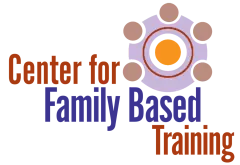Monday, October 1, 2018, 8:30am-4:00pm
C. Wayne Jones, PhD
Wednesday, October 3, 2018, 8:30am-4:00pm
Tara Byers, MS, NCC, LPC & Joshua Irvine, MA, LPC
Thursday, October 4, 2018, 8:30am-4:00pm
Tara Byers, MS, NCC, LPC & Joshua Irvine, MA, LPC
Alliance Behavioral Health, 4600 Emperor Blvd, Durham NC 27703
Children treated in intensive, in-home programs often live in families where caregiving functions have been compromised. That is, the caregivers are unable to provide the type of consistent structure and emotional support their children need to recover from emotional and behavioral problems. In ESFT, the focus of treatment is on the structure of family relationships and how this structure either constrains or promotes caregiving functions. This workshop introduces and explains the basics of family structure, such as boundaries, closeness-distance, and power. Opportunities are provided for participants to practice recognizing the most common structural patterns seen in families who have a child with SED. This workshop also shows how therapists’ assessment of family structure is used to guide focus in therapy sessions.
As a result of participating in these training activities, participants will:
- Describe the role of family structure in the Negative interactional Cycle
- Define three basic elements of family structure – closeness-distance, boundaries and power
- Identify symbols used to map family structure
- Identify four common dysfunctional structural patterns
- Practice identifying structural patterns in videos of family therapy sessions
- Describe how family structure shapes the focus of therapy sessions
Frequently Asked Questions
Visit our FBMHS Policies & FAQs for additional information regarding the CFBT online learning center, accommodations for disabilities, reporting problems with the course, instructions for viewing webinars, etc.

